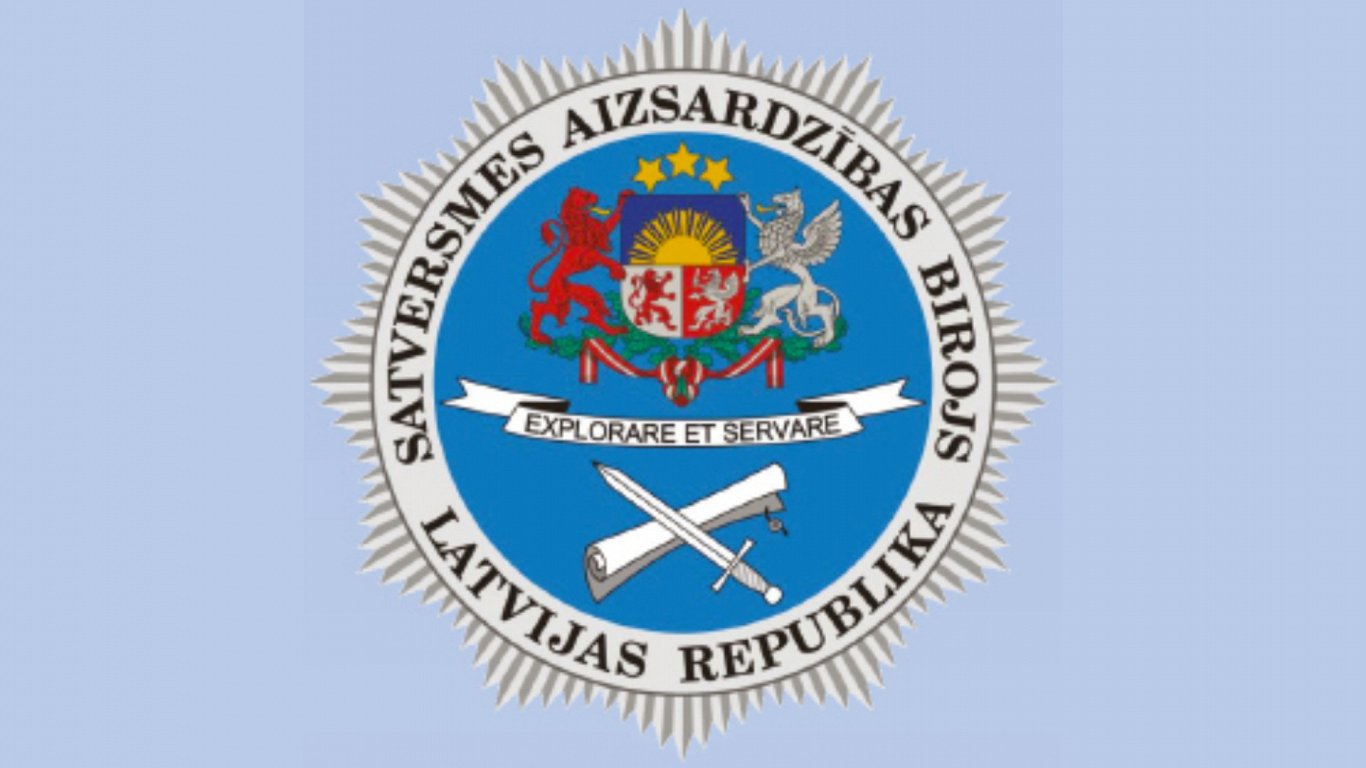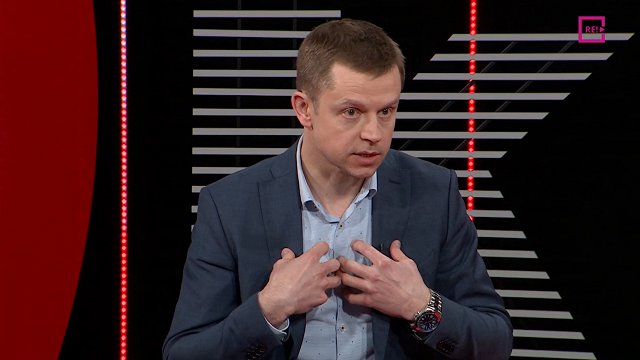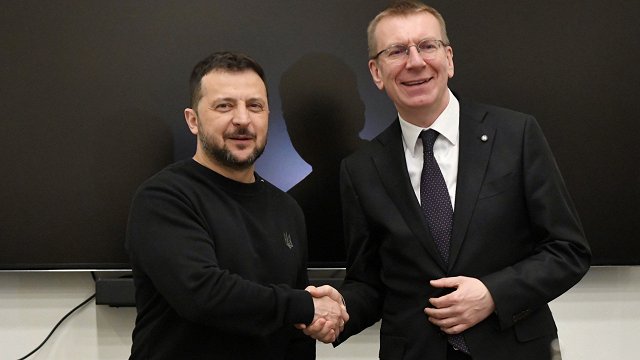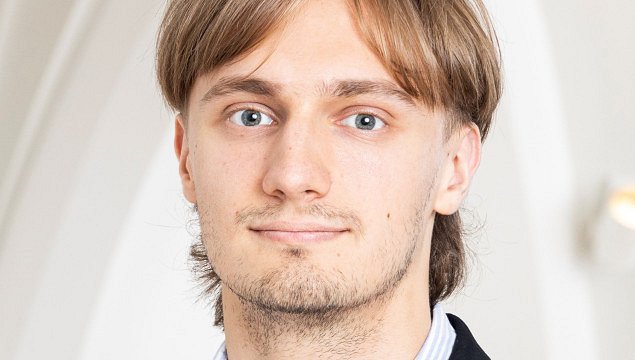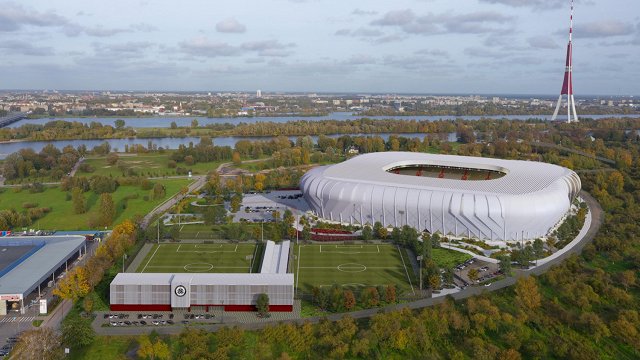Titled "Russia-NATO relations in the context of confrontation" the article is part of a series designed to make the work of the sometimes secretive agency more approachable and understandable to the wider public. It deals with internal Russian politics, the course of the war in Ukraine and – as the title suggests – the course of relations between the aggressor state and the NATO alliance.
"Since the invasion of Ukraine, anti-NATO statements have become part of the daily rhetoric of Russian officials. Part of the statements also include making a direct threat to the NATO alliance and its Member States. How Russia will build further relations with NATO can be influenced by a combination of factors. This is analyzed in the latest article prepared by SAB," says introductory text.
The commentary is more of a general geopolitical summary than anything with new or startling insights, but nevertheless we reproduce it below in full to help the stated intention "to supplement the informational space with reliable information that would serve the citizens as an explanation of current processes in the country and a forecast for their development." It offers a fairly concise and informative overview of a complex set of circumstances.
The Constitution Protection Bureau (SAB) is one of the three Latvian Security and Intelligence Services alongside the State Security Service (VDD) and Defense Intelligence and Security Service (MIDD).
Russia-NATO relations in the context of confrontation
Russia's relations with Western countries have gradually deteriorated since the 2014 annexation of Crimea and the start of hostilities in east of Ukraine. Further Russian invasion of Ukraine on February 24, 2022, which also included targeting civilians in conquered territories and targeted attacks on Ukrainian civilian infrastructure, has further increased antagonism between the two sides.
Russia's relations with NATO are particularly important within the framework of relations between Russia and the West. Historically, Russia has perceived NATO as a long-term threat. This is due to NATO as the world's strongest defence alliance, as well as developments since the end of the Cold War, when most of the Eastern European countries chose to secure their defence through NATO membership. Such choices by European countries have reduced Russia's ability to influence the politics of the countries concerned and led to a reduction in Russian influence in the region.
Eroding NATO's role and presence in the Eastern Europe was central to Russia's stated ultimatum to the US and Western nations in December 2021, when Russia had already begun widespread deployment of troops at Ukraine's borders. Since the invasion began, anti-NATO statements have become part of the daily rhetoric of Russian officials. Part of the statements also include making a direct threat to the NATO alliance and its Member States.
How Russia will build further relations with NATO can be influenced by a combination of factors - Russia's ability to rebuild its military and defence industry, Russia's economic situation and political considerations. The further development of NATO's defence and deterrence capabilities is equally important.
Russia's military capabilities and their potential changes
About 360,000 troops took part in Russia's invasion of Ukraine on February 24, 2022. Russia has reportedly lost more than 315,000 troops (dead and wounded) since the invasion began, according to the publicly available information. Ukrainian sources show even higher Russian army losses - exceeding 400,000.
The significant loss of the Russian army is illustrated by the necessity for mobilization. As early as September 2022, Vladimir Putin signed a decree declaring partial mobilization to maintain the military's combat capability. The recruiting of the fighters was also carried out by representatives of “private” military companies fighting in Ukraine, for example, “Vagner group" (sic) recruits their potential soldiers in Russian prisons.
The mobilization in Russia continues in a hidden way, as only in this way can the losses of live force in Ukraine be compensated. Mostly financial incentives such as salary that is above Russia's average are used to attract young soldiers. Specific activities, including the involvement of law enforcement, are carried out to recruit in the armed forces migrants from Central Asian countries who have recently acquired Russian citizenship.
Separate recruiting campaigns have also been caried out outside Russia in countries such as Syria, India, Cuba and Nepal. Repeated “open” mobilization has also not been ruled out as the war and Russia's losses continue. In making the decision on mobilization, Russia's leading elite will be guided by the situation on the front and the overall sentiment in society.
Along with the loss of soldiers, since the beginning of the war Ukrainian forces have managed to destroy a significant amount – up to 9,000 Russian military equipment, including tanks, infantry fighting vehicles and other types of weapons, as well as aircraft and ships. The largest losses of soldiers and machinery can be seen directly in the ground forces, with the Russian navy and air force maintaining relatively high fighting capabilities.
As Russia's invasion of Ukraine prolongs, the role of the military-industrial complex in maintaining the fighting effectiveness of Russian forces is growing. Russia has been able to adapt its production to the needs of war in the short term - to ensure repair of damaged machinery, modernization and adaptation of reserve equipment, as well as production of various types of munitions, including artillery ammunition and missiles.
As hostilities in Ukraine continue, Russia's ability to rebuild and replenish its arsenal is expected to decline. Already, sanctions are making access to Western-made components difficult. More expensive components imported into Russia through “third countries” must be used in arms production, bypassing sanctions, or relying on alternatives made in China or other countries that may be of lower quality or require additional adjustment.
Russia's military-industrial complex continues to face challenges from the workforce - especially the higher-skilled workforce - as well as challenges in motivating employees to continue working under high intensity conditions. Production capacity may be negatively affected by the depreciation of the infrastructure used in production and by limited access to the components necessary to restore the operation of the infrastructure. The diversion of the military-industrial complex's resources to maintain the Russian military's combat capability in Ukraine further limits the development and deployment of new military technologies, which in the medium term may increase the technological gap of Russian-made armaments from Western or Chinese-made armaments.
The war in Ukraine and the geopolitical changes it has caused in Europe have made it necessary for Russia to assess the appropriateness of the existing model of armed forces. As early as late 2022, Russian Defense Minister Sergei Shoigu issued a statement on reform of the Russian Armed Forces, directed at improving command and control of the military and increasing the number of units of the armed forces and personnel to 1.5 million by 2026. In the western direction, as part of the reform, on February 26, 2024, the military areas of Moscow and Leningrad, which had been merged into Western Military District since 2010, were restored.
Given the hostilities in Ukraine and the losses of Russian soldiers and machinery, it can be predicted with high credibility that Russia will face the challenges of making actual changes to its armed forces by 2026 and fully establishing and arming existing and newly formed units. This will not prevent Russia from developing a perception on the progress of the reform of the armed forces in public statements. The reform process will allow Russia to maintain an aggressive position on NATO members bordering Russia.
Top Russian officials regularly come up with threats to use nuclear weapons, including linking them to the course of hostilities in Ukraine and support from Western countries. The threat of the use of nuclear weapons is being used more intensively by Russian officials in cases where the Ukrainian army has succeeded on the front, or when the political discussion in the western countries about providing new support to Ukraine activates.
In the assessment of SAB, the nuclear threat is seen as Russian attempts to discourage Western countries from providing further support to Ukraine, as well as more active decisions to strengthen NATO, in particular to reinforce the presence of allies in the east of the alliance. Through aggressive nuclear rhetoric, Russia also tends to raise the alert level in Western societies.
Overall Russia is unlikely to use nuclear weapons in the short and medium term. The use of nuclear weapons would certainly trigger a negative international response from countries that are currently neutral or Russia-friendly, such as China. The use of nuclear weapons would also further consolidate Western countries, as well as could even make it easier to supply new types of weapons systems to Ukraine.
Russia's economy and political considerations in relations with NATO
Russia's war in Ukraine and related sanctions have had a negative impact on Russia's economy and access to foreign capital. At the same time, Russia continues to use the tools at its disposal to promote economic resilience.
Currently, one of the pillars of Russia's economy is its military-industrial complex, as well as its still high revenues from international hydrocarbon trade, including bypassing sanctions and trade restrictions. As the war in Ukraine continues, Russia will continue to adapt its economy to the needs of war, which on the one hand will allow hostilities and Russian army combat capabilities to be sustained, but in the medium term will reduce or even halt Russia's economic growth. More about the Russian economic situation since the invasion of Ukraine is described in the previous material, created by SAB.
Russia's invasion of Ukraine was planned as a fast-paced war in which Ukrainian resistance would be overcome in a short time, not as a more than two-year-long conflict for which Russia was not prepared, either militarily or economically. Given the course of the war, Russia has to reassess the potential course of potential future conflicts and assess the country's ability to engage in and win such a conflict.
The primary interest of Putin’s regime is to consolidate or hold their positions of power. Russia's domestic and foreign political activities are planned to take into account the above-mentioned interest, thereby making less likely activities that directly threaten the stability of the regime.
On the one hand, the conflict situation can be used by the regime to further mobilize society, on the other hand, risks to the regime to remain in power increase in the event of losses. Risks to the regime may rise despite the regime's vast propaganda apparatus, which is already unable to contain socially active groups of society such as groups of "soldiers' mothers" during the Ukraine war. The failed course of war in Ukraine, including Ukraine's ability to resist much larger Russian forces, makes it necessary for the V.Putin regime to reassess Russia's ability to manage the war and achieve the intended result.
In the assessment of SAB in the short and medium term, Russia's willingness to embark on an open conventional military confrontation with a stronger adversary like NATO is unlikely.
Maintaining the external threat is one of the most common instruments of public mobilization in authoritarian countries and used by the Russian political regime. NATO is described in Russia as an aggressive anti-Russian organization and, in the medium term, it is more beneficial for Russia to maintain NATO's image as an aggressor, thus continuing to mobilize public support around the political regime.
Russian officials will continue to spread messages about NATO's threat as Russia, and the need to pursue confrontational policies from Russia, in its public communications with varying intensity. Russia's relationship with NATO and the possibility of confrontation should also be assessed in the context of other regional and global policy processes. Regionally, Russia's invasion of Ukraine has reduced Russian influence in neighboring regions, such as the South Caucasus or Central Asian countries.
An open confrontation with NATO is likely to force countries in the region to seek alternative lines of cooperation, thus reducing Russia's role in the region. Russia's invasion of Ukraine has increased Russia's dependence on China. China continues to strengthen as Russia's energy market and the presence of Chinese goods in Russian markets is increasing. As China's economic growth continues, in a situation where Russia's economy is stagnating, there is a high likelihood that Russia will have to pay more strategic attention to China and how to curb Russia's increased dependence on China.
Invading Ukraine, V. Putin's regime had relied on a lack of unity in the West and the differing views of Western countries in relations with Russia. However, the war has fostered Western unity and readiness to implement measures to rein in Russian aggression. In addition, the Russian invasion has facilitated a review of the defence policy of Western countries, especially European countries, with most countries taking decisions to increase defence capabilities in the coming years.
One indicator is the diverted public funding for defense, for example 18 of the 32 NATO members will divert at least 2% of GDP to defense in 2024. According to the International Institute for Strategic Studies, NATO Member States' defense spending accounted for 57.8% of global spending in 2023, while Russian spending was 4.8%. Since the invasion began, NATO has taken a series of significant practical steps to strengthen deterrence and defense capabilities, such as developing new regional plans. An important step in strengthening the alliance's shared capabilities, especially in the Baltic Sea region, is the accession of Finland and Sweden to the alliance.
Conclusion
The pace of Russia's invasion of Ukraine has raised questions about further scenarios for Russian action, including a possible open confrontation with Western countries, including NATO members. The announcements of reforms by Russian forces aimed at strengthening a military presence in the country's western regions, the regular threat of nuclear weapons use from Russian officials, as well as the generally confrontational tone maintained by Russia, give the impression of the inevitability of an open military confrontation.
A review of Russia's actual situation, in turn, shows a number of factors that do not support what has been expressed in Russia's rhetoric. First, the primary task of Russia's defence sector is winning the war in Ukraine, diverting most of the resources of the armed forces and military-industrial complex and the armaments reserves accumulated in previous years to this aim. Russia will need time to restore the weapons lost in the war, train soldiers as well as restore reserves. These actions will have to be taken in circumstances where the Russian economy will continue to face challenges and the country will have to assess which needs to divert scarce resources.
While V. Putin's regime remains stable, the war in Ukraine has intensified pressure on the regime, including creating new kinds of risks for the regime, as the “Prigozhin’s coup” demonstrated in June 2023. The primary objective of the V. Putin regime is to maintain its power and while confrontational policies with the West contribute to the mobilization of society and support for the regime, the fact remains that further escalation or open military conflict can also have unpredictable consequences for the regime.
According to the SAB’s assessment, in the short and medium term, the V. Putin regime will continue to maintain confrontational relations with Western countries and NATO, including the threat of escalation, including the use of nuclear weapons.
Russia will most likely continue to use different types of hybrid methods against NATO members, including information and influence operations and cyber-attacks. At the same time, the probability of conventional military confrontation with Russia remains low.
